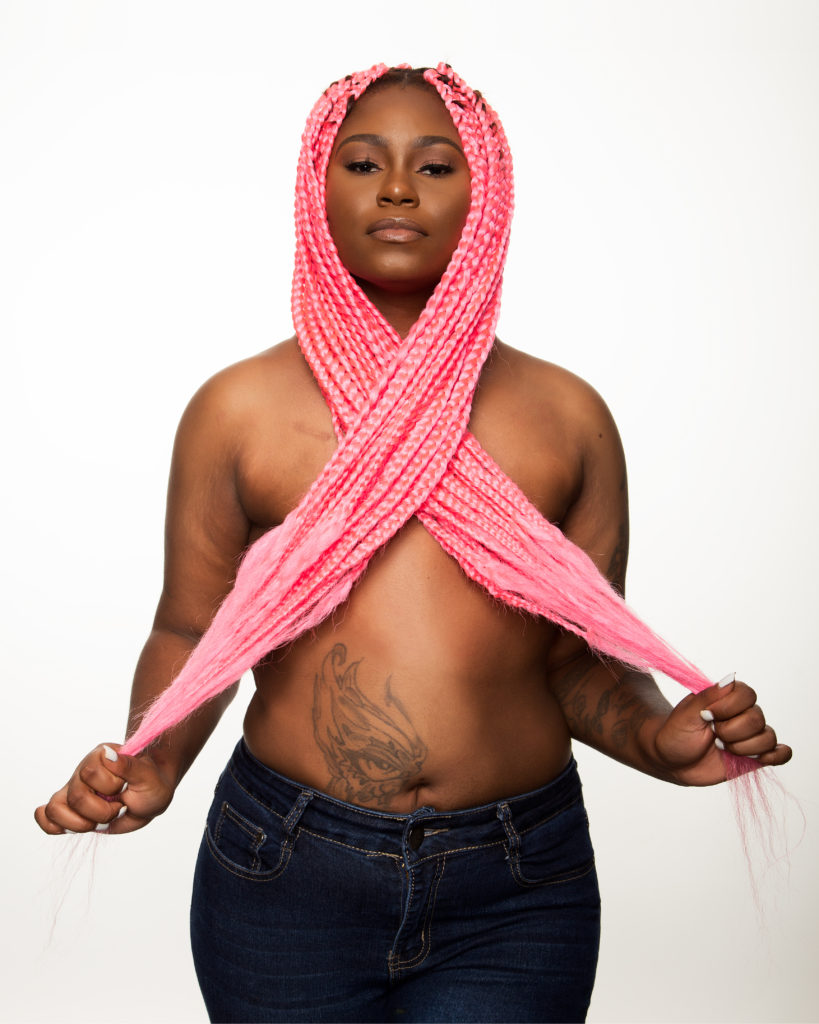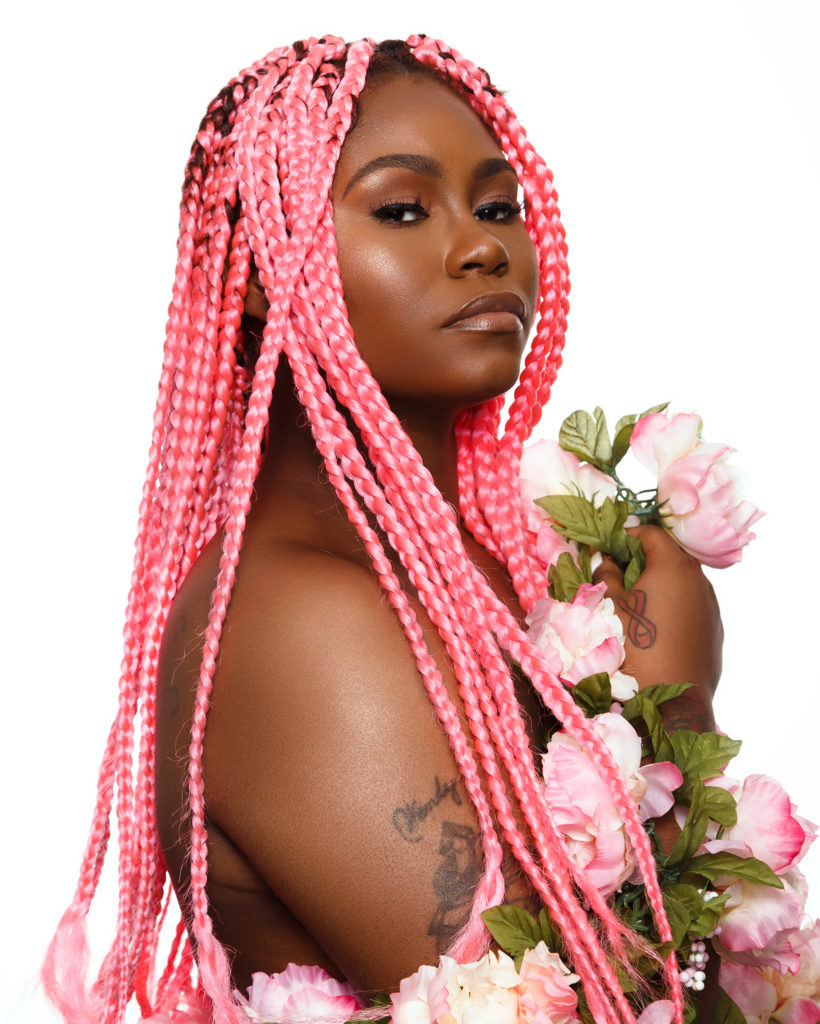PHOTOS BY STRATAGEM
A sunny June day in 2015, it was just a normal workday for Wendy at the pharmacy she worked at. As she went about her day, she thought about an article she read about doing a monthly BSE (Breast Self Exam).
At 23 years old, and no family history of cancer of any kind, she still took time to complete the exam during her lunch break. And she found something. After her break was over, she immediately confided her discovery to the pharmacist she was working with that day. Her co-worker strongly encouraged her to go and get it checked out.
Wendy waited 3 sleepless nights, and finally went into Rochester General to get some answers. After the exam, she was told that it was possibly fibrosis, and was not biopsied, and told not to worry. Although she felt a bit calmer, something still nagged at her mind. A week later, she decided to get a second opinion. This time she went to the Emergency room at Strong Memorial Hospital. After her initial exam at Strong, she was referred to the Breast Care Center, where she received a biopsy. Three long days later, her phone rang at five in the morning, with grave news. Wendy was diagnosed with breast cancer, at the young age of 23.
Wendy was referred to the Pluta Cancer Center, which works in conjunction with Strong Memorial Hospital. After twelve rounds of chemotherapy and radiation, her doctors were very concerned the cancer would return. Gloria made the decision to undergo a double mastectomy.
 As she was so young, Wendy had attempted a reconstruction surgery. Tissue expanders were placed under the skin where her breasts once were. Unfortunately, it was unsuccessful, and the expanders had to be removed due to infection. She was devastated.
As she was so young, Wendy had attempted a reconstruction surgery. Tissue expanders were placed under the skin where her breasts once were. Unfortunately, it was unsuccessful, and the expanders had to be removed due to infection. She was devastated.
After 3 years of feeling self conscious, having a poor body image, and not dating, Wendy new she needed a change. At age 25, she made the decision to undergo reconstructive surgery. On October 8, she will endure a bilateral mastectomy reconstruction. Wendy’s latissimus dorsal muscles from her back will be harvested and used to create new breast structures. The surgery is intense, and will take 8 hours to complete, and will be completed at Strong Memorial Hospital, where she has received all of her treatment. The surgery will allow her to have a new lease on life, feeling confident again.
When asked what we can take away from her experience, Wendy didn’t hesitate:“ I want women to use my story as a platform; I want women to be more aware of their bodies…..if something doesn’t seem right, trust your instincts. I had zero history of any kind of cancer in my family, yet I was still diagnosed (with it). I was the youngest breast cancer patient my doctor ever treated. Cancer knows no age, race, or creed. Empower yourself. You only have one body, so you need to take care of it.” Words of wisdom, from an inspiring young woman.
Breast self-exam, or regularly examining your breasts on your own, can be an important way to find a breast cancer early, when it’s more likely to be treated successfully. While no single test can detect all breast cancers early, performing breast self-exam in combination with other screening methods can increase the odds of early detection. Breast self-examination is a useful and important screening tool, especially when used in combination with regular physical exams by a doctor, mammography, and in some cases ultrasound and/or MRI. Each of these screening tools works in a different way and has strengths and weaknesses. Breast self-exam is a convenient, no-cost tool that you can use on a regular basis and at any age. We recommend that all women routinely perform breast self-exams as part of their overall breast cancer screening strategy.
 HOW TO DO A BREAST SELF EXAM:
HOW TO DO A BREAST SELF EXAM:
Step 1: Begin by looking at your breasts in the mirror with your shoulders straight and your arms on your hips.
Here’s what you should look for: Breasts that are their usual size, shape, – Breasts that are evenly shaped without visible distortion or swelling
If you see any of the following changes, bring them to your doctor’s attention: – Dimpling, puckering, or bulging of the skin
– A nipple that has changed position or an inverted nipple (pushed inward instead of sticking out)
– Redness, soreness, rash, or swelling
STEP 2: Now, raise your arms and look for the same changes.
STEP 3: While you’re at the mirror, look for any signs of fluid coming out of one or both nipples (this could be a watery, milky, or yellow fluid or blood)
STEP 4: Next, feel your breasts while lying down, using your right hand to feel your left breast and then your left hand to feel your right breast. Use a firm, smooth touch with the first few finger pads of your hand, keeping the fingers flat and together. Use a circular motion, about the size of a quarter.
Cover the entire breast from top to bottom, side to side — from your collarbone to the top of your abdomen, and from your armpit to your cleavage.
Follow a pattern to be sure that you cover the whole breast. You can begin at the nipple, moving in larger and larger circles until you reach the outer edge of the breast. You can also move your fingers up and down vertically, in rows, as if you were mowing a lawn. This up-and-down approach seems to work best for most women. Be sure to feel all the tissue from the front to the back of your breasts: for the skin and tissue just beneath, use light pressure; use medium pressure for tissue in the middle of
your breasts; use firm pressure for the deep tissue in the back. When you’ve reached the deep tissue, you should be able to feel down to your ribcage.
Step 5: Finally, feel your breasts while you are standing or sitting. Many women find that the easiest way to feel their breasts is when their skin is wet and slippery, so they like to do this step in the shower. Cover your entire breast, using the same hand
movements described in step 4.
WHAT TO DO IF YOU FIND A LUMP Don’t panic if you think you feel a lump in your breast. Most women have some lumps or lumpy areas in their breasts all the time, and most breast lumps turn out to be benign (not cancer). There are a number of possible causes of non-cancerous breast lumps, including normal hormonal changes, a benign breast condition, or an injury.
Don’t hesitate to call your doctor if you’ve noticed a lump or other breast change that is new and worrisome. This is especially true for changes that last more than one full menstrual cycle or seem to get bigger or more prominent in some way. If you menstruate, you may want to wait until after your period to see if the lump or other breast change disappears on its own before calling your doctor. The best healthcare provider to call would be one who knows you and has done a breast exam on you before — for example, your gynecologist, primary care doctor, or a nurse practitioner who works with your gynecologist or primary care doctor.
Know what to expect. At an appointment to evaluate a breast lump, your doctor will take a health history and do a physical exam of the breast, and will most likely order breast imaging tests. Ultrasound is often the first or only imaging test used to evaluate a lump in women who are under age 30 or are pregnant or breastfeeding. Both an ultrasound and a mammogram are typically recommended to evaluate a lump in women who are over age 30 and not pregnant or breastfeeding. If further testing is needed, your doctor may recommend additional imaging with MRI (magnetic resonance imaging), MBI (molecular breast imaging), and/or a biopsy. He or she may also refer you to a breast specialist (typically, a breast surgeon) for further evaluation.
 Make sure you get answers. It’s important that your doctor gives you an explanation of the cause of the lump or other breast change and, if necessary, a plan for monitoring it or treating it. If you’re not comfortable with the advice of the first doctor you see, don’t hesitate to get a second opinion.
Make sure you get answers. It’s important that your doctor gives you an explanation of the cause of the lump or other breast change and, if necessary, a plan for monitoring it or treating it. If you’re not comfortable with the advice of the first doctor you see, don’t hesitate to get a second opinion.





